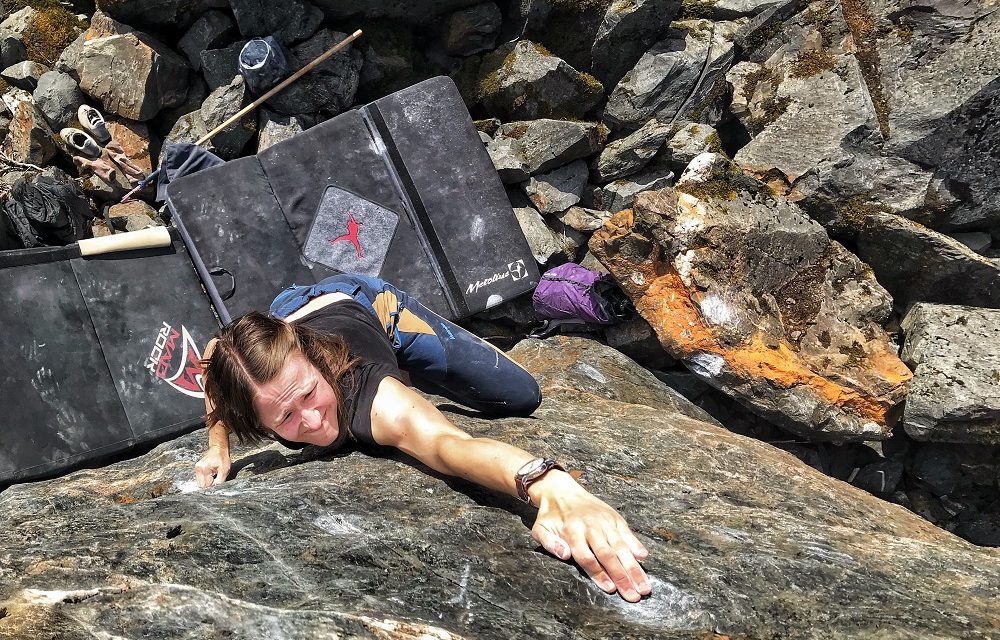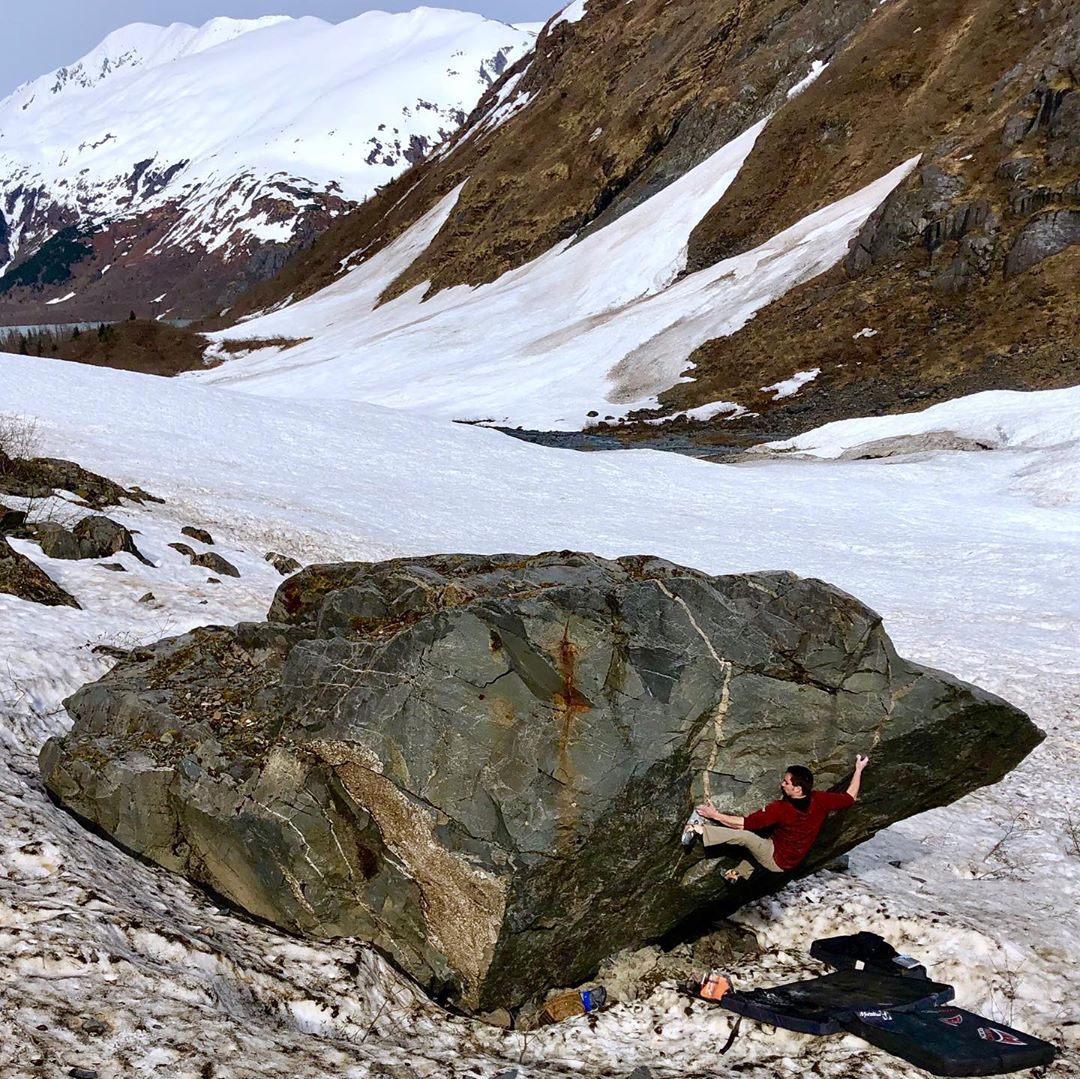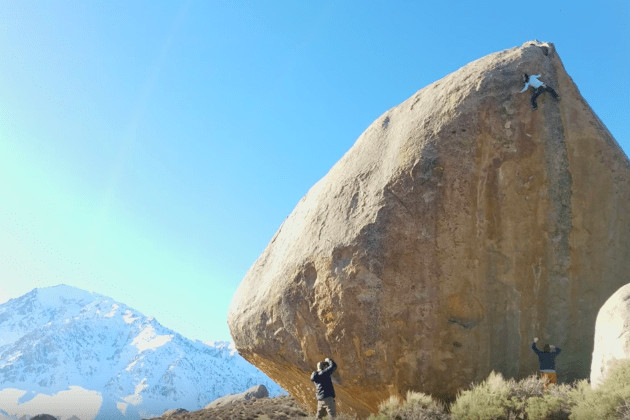We all crave progression in our rock climbing. Whether climbing 5.9 or 5.14, we always look at the higher grades as “the next step.” For a while, those next steps are easy to climb! In our early climbing years, we see an astounding level of progress. Unfortunately, we are never able to repeat this rapid rate of improvement.
What happens when we hit the inevitable plateau?
Is that “our level” forever? Or just until we decide to do something about it? This is the point where the true differences between climbers begin to show. Some are happy at “their level,” others desire to progress further. Of those that desire further progress, some shy away from putting in the work, and others are drawn to it like moths to a flame. I believe that progression should only be sought out by those that are truly excited to put in the work necessary to earn true and lasting progress. Not sure if that’s you? Then it probably isn’t. If you want to get better, but you’re only willing to put in some effort to see some progress, you’re only going to plateau again, and much sooner than the first time with far less to show for it than you’d hoped. You’ll then be faced with a similar choice, only instead of stagnation, you risk regression. You’ll need to put in work just to stay where you are, and the work you’ll need to do to continue to progress will be even more daunting–and the returns even more minuscule.
This is the harsh reality of climbing training: nothing comes for free, not even maintenance. Why start yourself on that path in the first place if you know going in that you don’t want to commit to doing the work? Why not stay at “your level” and just enjoy every moment you spend on the wall? Whether practicing skills or training physical attributes, progression requires a commitment to doing the work.
Climbing training has taken off so much in the past decade–and it’s so easy to do–that many people view it as a shortcut to “being better.” Sure, being stronger and more fit will certainly help you haul yourself up more difficult climbs, but will that really make you better?
“Better” is a state of mind, not body, and many climbers believe they can work around getting better by getting stronger. Being willing to do the work to progress means you have to do all the work, not just some of it.
So you’re still reading, does that mean you’re ready to work for climbing progression? If so, what’s next? How do you go about attaining that progress? Where do you even start?
Start with the Hierarchy of Training Considerations
The “Hierarchy of Training Considerations” is a step-by-step guide to lead you through the process of creating a strategic and targeted approach to improve your rock climbing. This process of improvement is a hierarchy because each step is wholly dependent on the previous ones. Don’t cheat yourself or waste your effort by skipping steps! Here’s the rundown of the hierarchy of training considerations:
The Hierarchy of Training Considerations
1. Set a long term goal.
This can be anything from a coveted ascent of a specific route or boulder to simply becoming a more self-sufficient climber that doesn’t rely on others’ beta or advice. A key point is to keep the goal open-ended and avoid drawing a hard line between success and failure. Say you want to redpoint La Rambla. You set the goal, you get after it, and you don’t succeed before the season ends. Have you actually failed? Or have you simply not yet succeeded? Be compassionate with yourself when setting these goals.
The real trick to a career of constant progress is to see and value all forms of progress without getting demoralized by setbacks or perceived failures. Setting your goals accordingly will help keep that in mind. All progression should be goal-oriented. We all want to be better climbers, but what does that look like for you? Doing harder moves? Longer routes? Or maybe just being able to do more in a day? Consider what you really want before attempting to embark on a journey of progression, lest you risk missing the forest for the trees.
Stay tuned for the next part of this series where we reveal how to set goals that really work.
2. Determine your needs.
Think about your goal and what it requires. Then think about where you are in relation to the requirements of your goal. Want to free climb El Cap in a day, but you feel positively wrecked after a few laps on that new 5.11 at the gym? Sounds like you could use some improved endurance (among other things). Fortunately, with the recent explosion of interest in climbing and how to train for it, there are some pretty simple methods to assess your current level of physical fitness, and building it up is stupidly easy. Where the waters get a little muddy with this one is when your needs aren’t physical, but rather technical or mental. Maybe you want to climb Ambrosia, but you just about fear vomit all over yourself every time your feet are higher off the ground than your spotter’s hands. There’s some mental work to be done there, and Ambrosia doesn’t care that you can do 1-5-9 on the campus board and redpoint 5.14b.
Watch Nina Williams on Ambrosia V11/5.14a.
3. Set short term goals.
These should be seen as waypoints to guide you on the path to achieving your long term goal. Unlike the long term goal, these should be simple, specific, and quantifiable so you can measure your progress. Things like upping your strength, getting more flexible, building confidence climbing over poor landings, becoming willing to commit to desperate moves, etc. Keep it simple and make these goals count.
Don’t overwhelm yourself with dozens of things you want to improve, rather, prioritize what’s really lacking. Sometimes playing catch-up with a few skills is just what your other skills need to keep improving.
4. Build a training plan.
When you know what you want, what you have, and what you need, you can start putting a plan together to get after it. Different climbers will require different plans, even if their goals are the same. Concepts and general framework can be the same, but you should never shy away from personalizing your plan. The worst thing you can do for your climbing is to hold yourself to someone else’s standards. The right plan for you is the one you can keep up with (while still being challenged), that you can recover from, and that you can stick with from start to finish.
Final thoughts
It’s important to remember that enhancing your climbing performance should be viewed as a career-long (or lifelong) journey rather than something you can achieve on a whim through a brief and passionate flirtation with “training.” While there may be some inefficiencies in your climbing that you can address and rectify fairly quickly, that by no means implies that your journey is complete. There will always be something to improve, some inefficiency to eliminate. Training is a tool we use to aid our progression as climbers. Like all tools, it has a time and a place, but it can’t do everything.
Constant progression doesn’t necessarily demand constant work, either. It’s immensely important to give yourself breaks from hard training. The key is to work just hard enough, just often enough, to advance your abilities without working so hard that you forget why you’re doing it in the first place.
Being a competitive climber, training long and hard 4 to 5 days a week without any “fun” climbing really ruined my love for the sport. It took me a while to rediscover that love, and in the time between, I felt totally devoid of purpose. Don’t let that happen to yourself. No gains are worth it if they come at the cost of enjoying the sport.
I’ve been in the game for 20 years and I still have a long way to go to be the climber I want to be and that I know I can be. But that doesn’t mean I don’t also take time to enjoy being the climber I am now.
Follow the Hierarchy of Training Considerations to keep your training on target, and you will remain balanced in your pursuit of progression and enjoyment of rock climbing.










